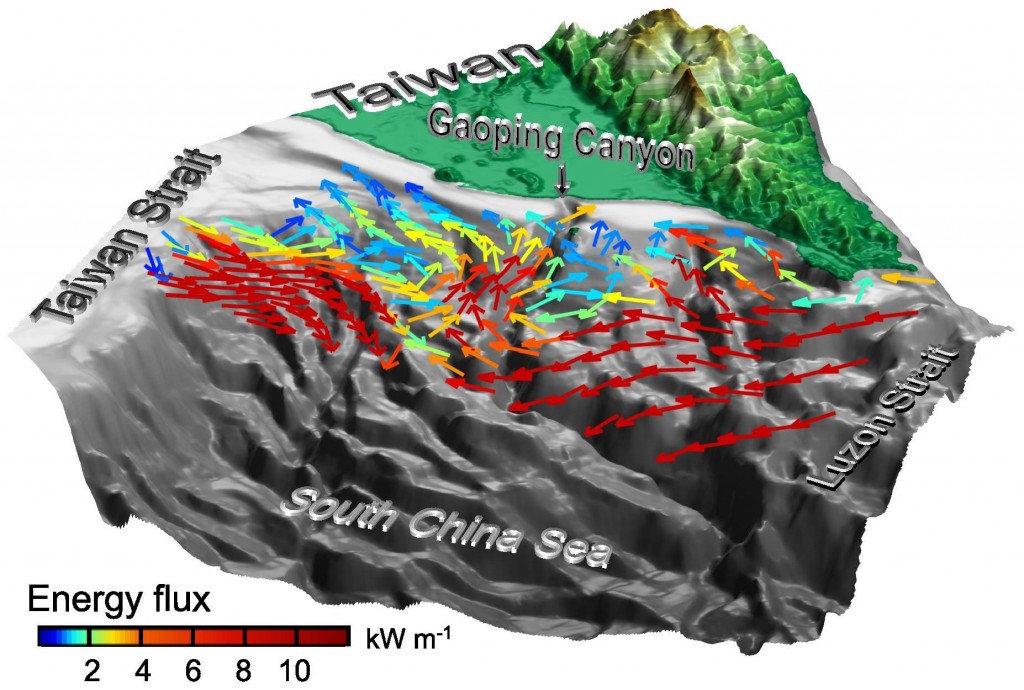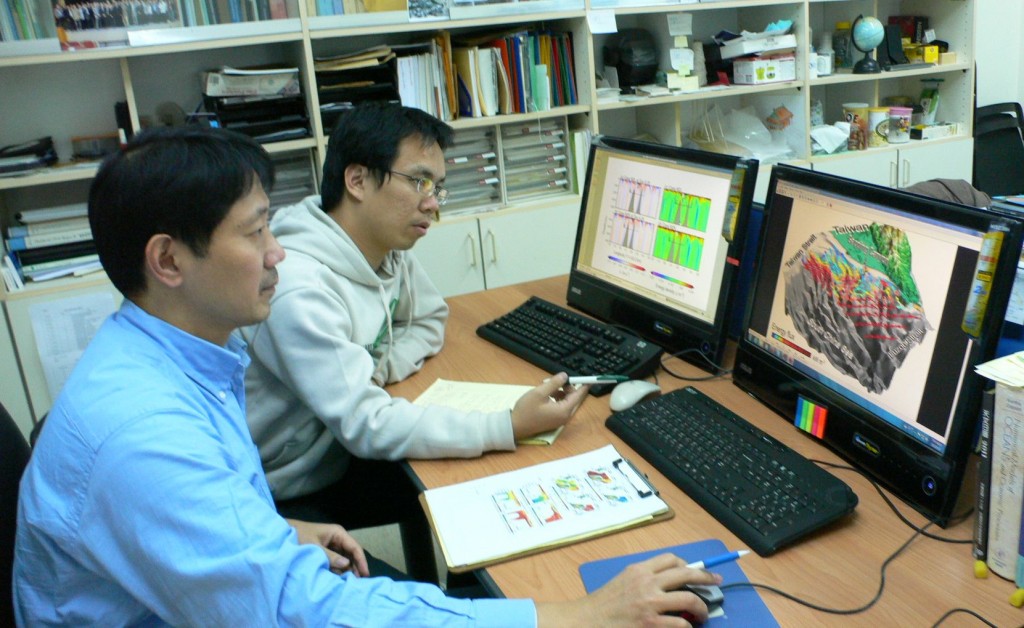The editors of AGU have selected the Journal of Geophysical Research – Oceans paper, entitled “Sources of baroclinic tidal energy in the Gaoping Submarine Canyon off southwestern Taiwan,” as an “AGU Research Spotlight.”
Title: Interacting ocean waves explain powerful sea floor canyon flows
Off the southwestern coast of Taiwan the Gaoping Submarine Canyon meanders in a giant backwards “S” as it stretches southwestward toward the South China Sea. In the canyon, a 200-m-deep cut into the seafloor that lies 300 m below the sea’s surface, the waters carry an usually large amount of internal tidal tidal power—9.1 MW from the canyon’s mouth to its head. Along with the strong flows a region of enhanced vertical mixing sits at the canyon’s head. Researchers had previously attributed the anomalous flows to internal waves pushing through the Gaoping Canyon, though the source of the energy remained an open question. When tide-driven waves pass over a sudden change in seafloor topography, the shift in pressure triggers gravity waves (known as internal waves) that propagate through the ocean’s interior. Using a three-dimensional model of the surrounding ocean, Chiou et al. (2011) isolated the likely source of the internal waves. The authors found that the powerful waves travelling through the Gaoping Canyon were not generated on site. Instead, they spawned at the nearby Taiwan and Luzon straits, each the site of a 6000 m change in relief. However, these remote waves were not enough to fully explain the energy seen in the flows in the Gaoping Canyon. From their model, the authors found that, at the head of the canyon, a large standing wave was amplifying other incoming waves. The authors suggest this standing wave was formed by one of two mechanisms: either the internal waves from the Taiwan and Luzon straits were positively interfering, or the Luzon Strait waves were interfering with other Luzon Strait waves that had previously reflected off the steep walls of the Taiwan Banks. The authors suggest that this standing wave is also responsible for the enhanced vertical mixing seen near the Gaoping Submarine Canyon. — Colin Schultz, AGU’s Editor/Writor.
(Reported by JGR Site:http://www.agu.org/cgi-bin/highlights/highlights.cgi?action=show&doi=10.1029/2011JC007366&jc=jc ;Publication in http://www.agu.org/pubs/crossref/2011/2011JC007366.shtml )

Colored arrows indicate the energy flux of the internal tide flowing in and around the Gaoping Canyon, with warm colors denoting high flux and cool colors low flux. The internal waves are heavily influenced by steep drops in the sea floor at the Taiwan and Luzon straits. Photo Credit: Sen Jan. (Summarized by Colin Schultz, AGU’s Editor/Writor)











